Why you can trust Tom's Hardware
Given what we've seen so far, it's a safe bet that Nvidia will maintain its lead in ray tracing benchmarks. The RX 6900 XT may close the gap a bit, but 10 percent more shader cores can only go so far. For these DXR tests, we'll mostly be looking at the RTX 30-series and the RX 6000-series GPUs, though we do have RTX 2080 Ti results as well. For reference, the RTX 2080 Super is just a bit slower than the RTX 3060 Ti, while the remaining 20-series GPUs scale down from there.
Our format is the same as above, just with eight additional games (tests) — and we'll forego any further commentary on Dirt 5 and Watch Dogs Legion since we already covered those. Considering Nvidia was the only ray tracing solution in town up until the RX 6800 XT launch, most of these games are Nvidia promoted titles. Any ray tracing effects are also inherently targeted at Nvidia's hardware.
10 Game Average


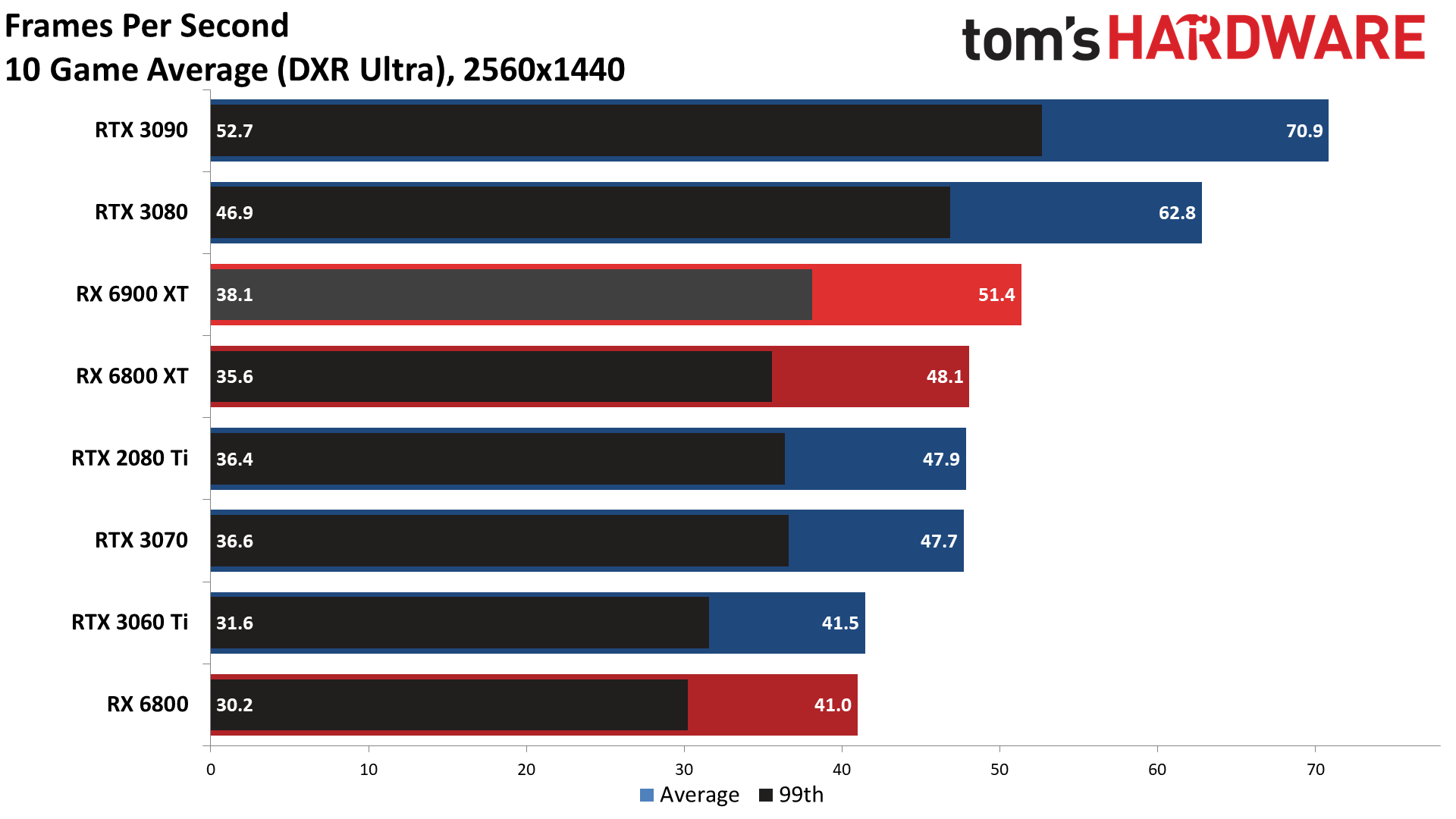

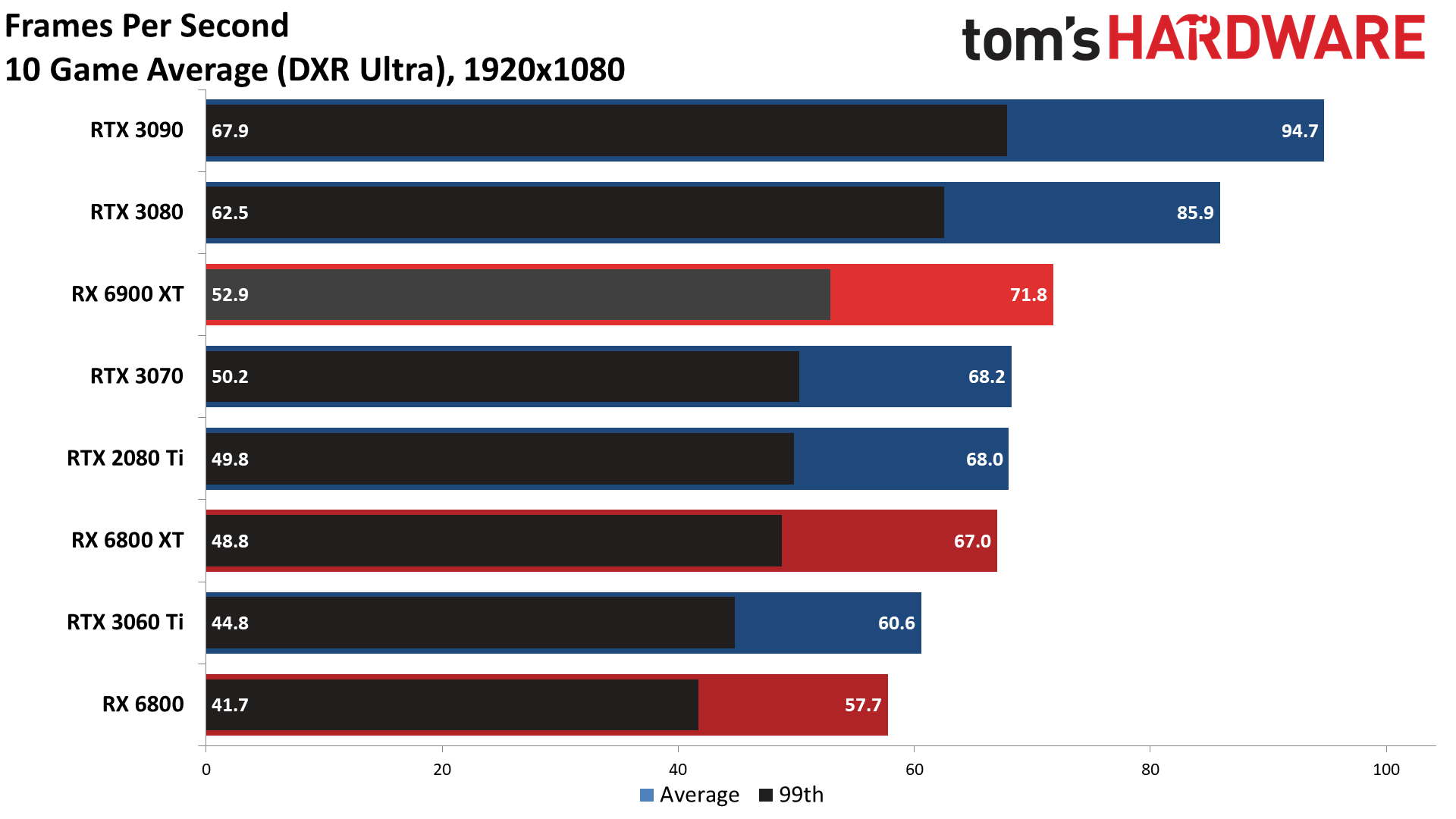

Ray tracing continues to be extremely demanding, especially at higher resolutions without something like DLSS to help reduce the complexity. The RTX 3090 only averages 41 fps across the test suite, while the 3080 averages 36 fps. The 3080 ends up being 20-30 percent faster than the RX 6900 XT, and the 3090 is 35-50 percent faster than AMD's top GPU. If you're hoping to go all-in on ray tracing games in the next couple of years, you can actually make a pretty good argument for just going whole hog and buying the 3090. We also took an early look at Cyberpunk 2077 performance, which even in not-quite-final code looks great. The RT effects do add something to the game world, but you pretty much need DLSS to get 60 fps with most RTX cards.
3DMark Port Royal






3DMark Port Royal ends up on the lower end of the spectrum in terms of the performance gap between Nvidia and AMD GPUs. The RTX 3090 is consistently around 35 percent faster than the 6900 XT, while the 3080 is about 18 percent faster. 3DMark isn't a game, though it's a very common benchmark, so we wanted to at least use it as a point of reference.
Boundary
Get Tom's Hardware's best news and in-depth reviews, straight to your inbox.


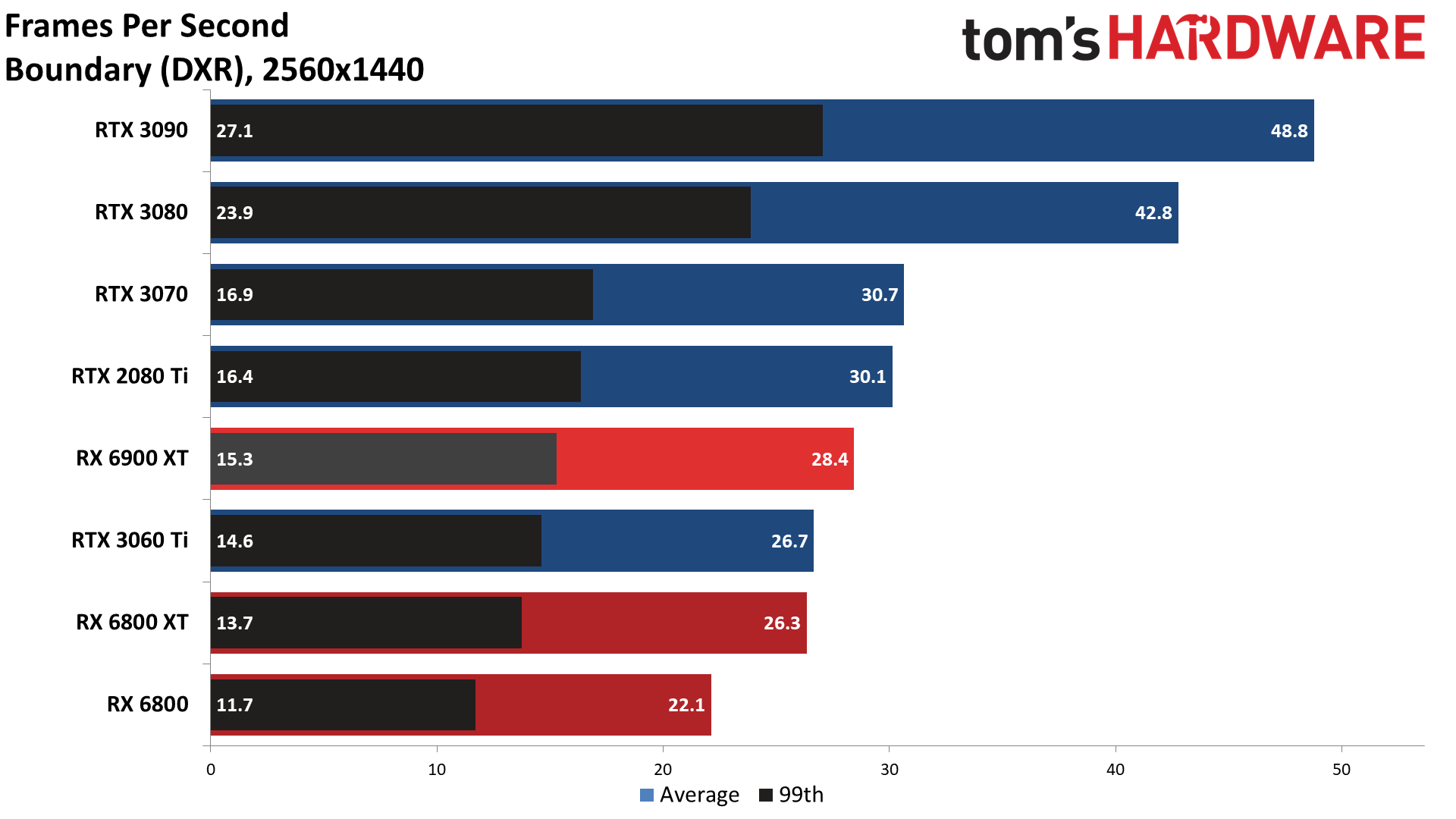
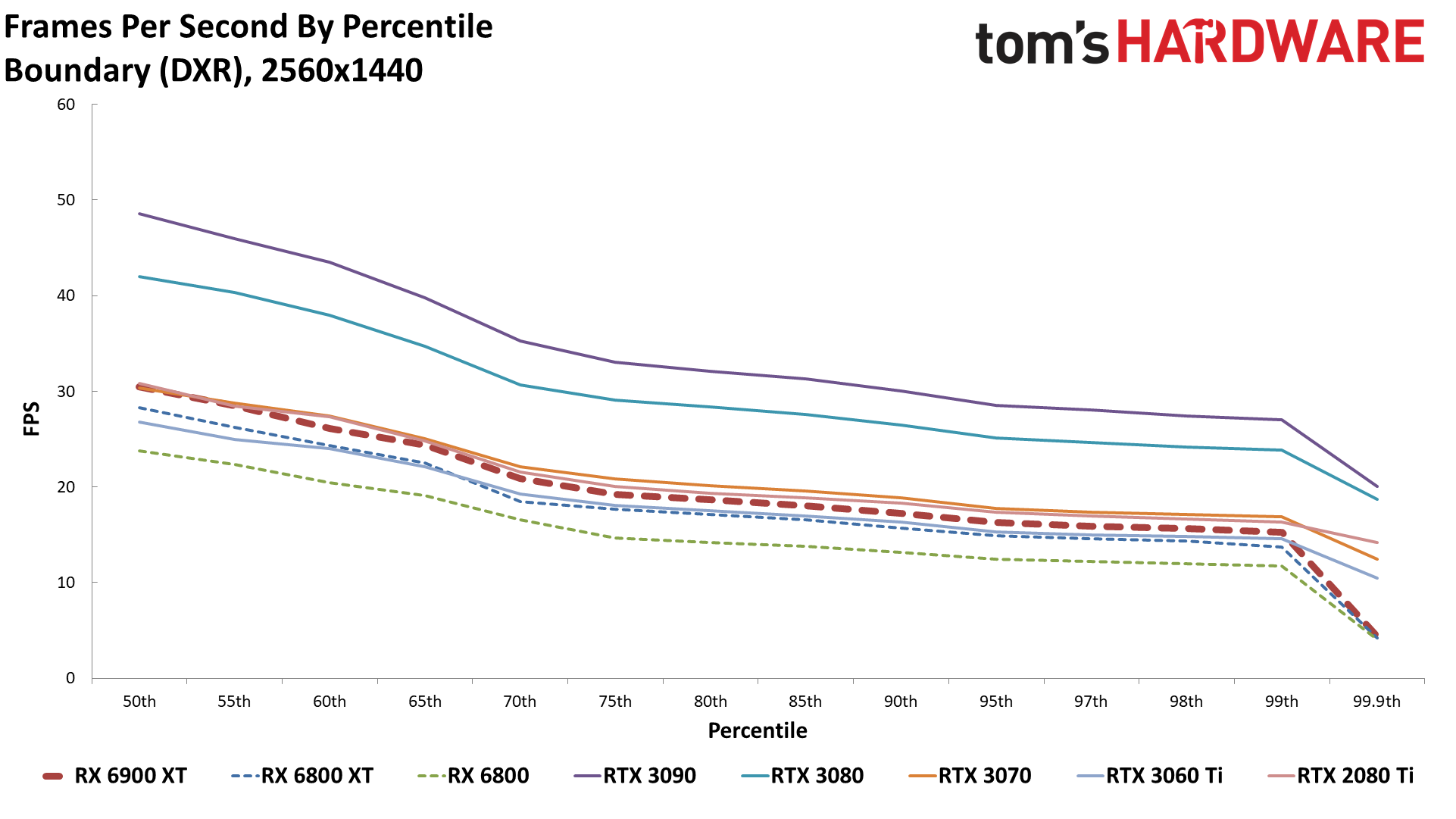
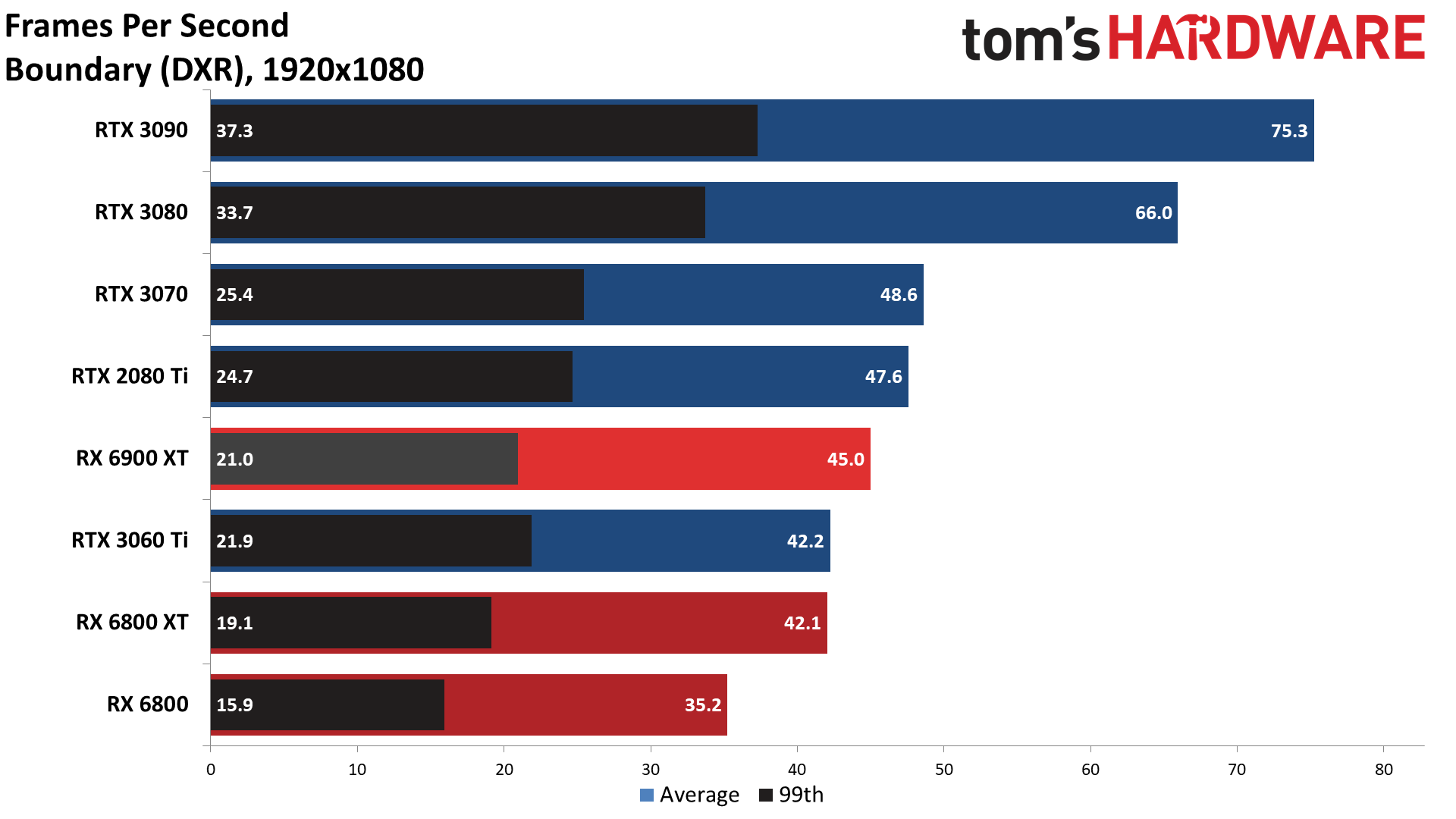

Boundary is a benchmark of an upcoming game, and it uses Unreal Engine with a bunch of ray tracing effects. The result is very taxing on even the fastest GPUs, especially without DLSS. At 1080p, the 3080 is 47 percent faster than the 6900 XT, and that lead grows to 51 percent at 4K. The 3090 is 67 to 75 percent faster than the 6900 XT. With DLSS Quality mode, performance can improve another 40 percent or more. If this is what the future of ray traced games holds, AMD will absolutely need Super Resolution if it hopes to compete.
COD: Black Ops Cold War

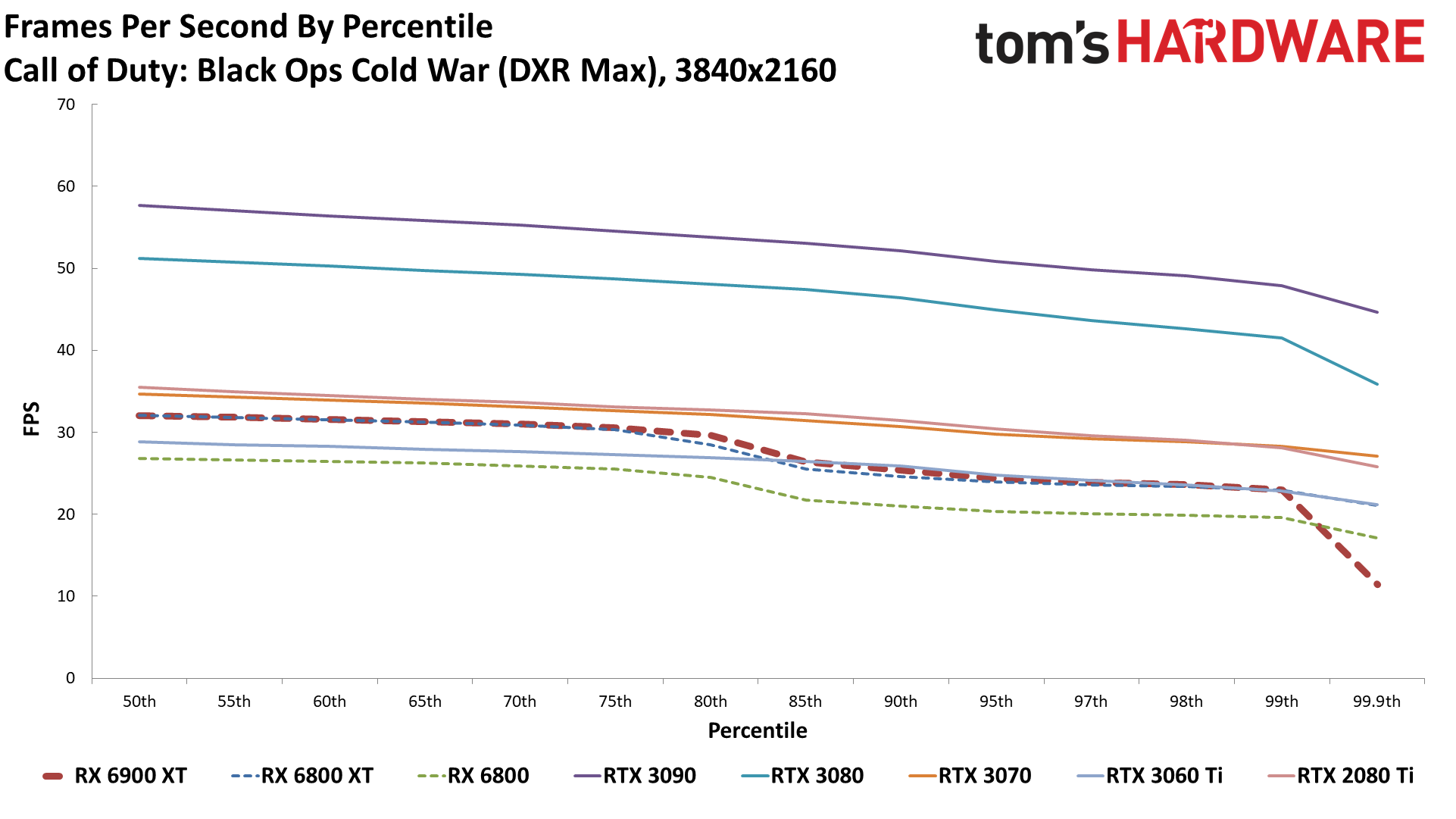



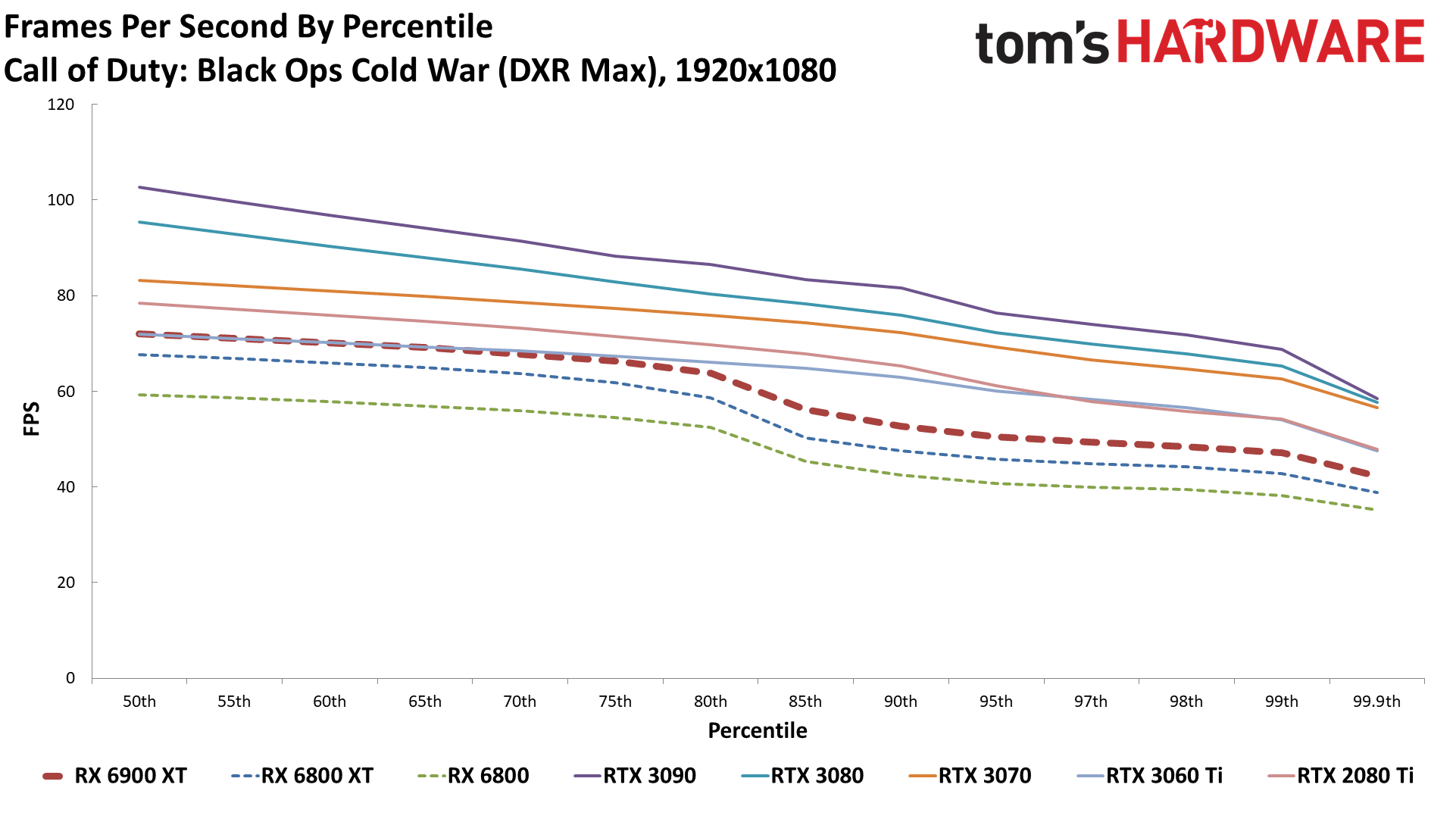
Call of Duty: Black Ops Cold War only uses ray tracing effects for shadows and ambient occlusion, and honestly, it doesn't make that big of a difference visually. Even so, it's extremely taxing, and AMD's RX 6000 cards all struggle to keep up with their RTX counterparts. The 3090 is 'only' 46 percent faster at 1080p, but that lead balloons to 88 percent at 4K, where the 3090 maintains a still decent 58 fps while the 6900 XT just barely averages 30 fps.
Control



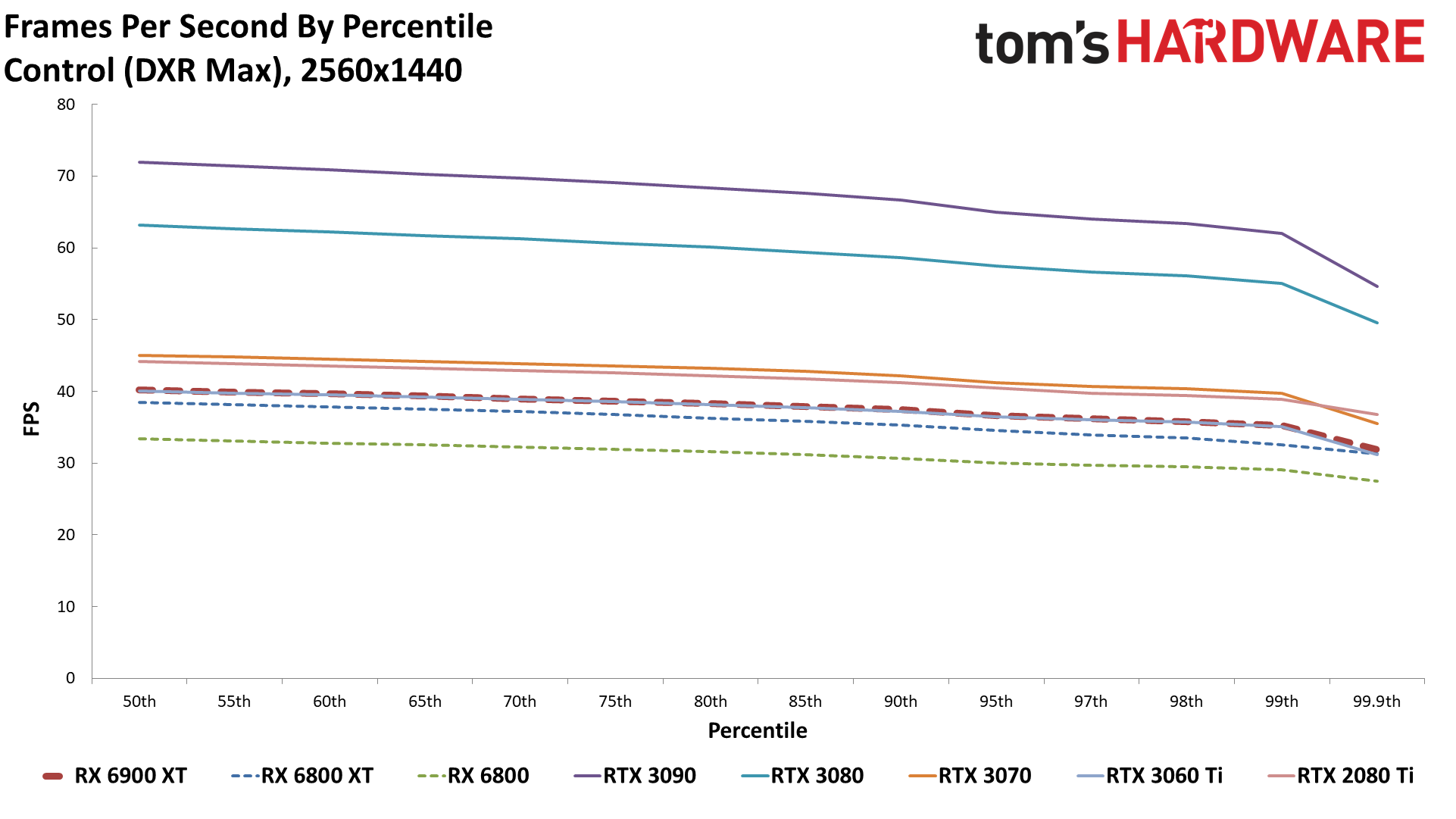

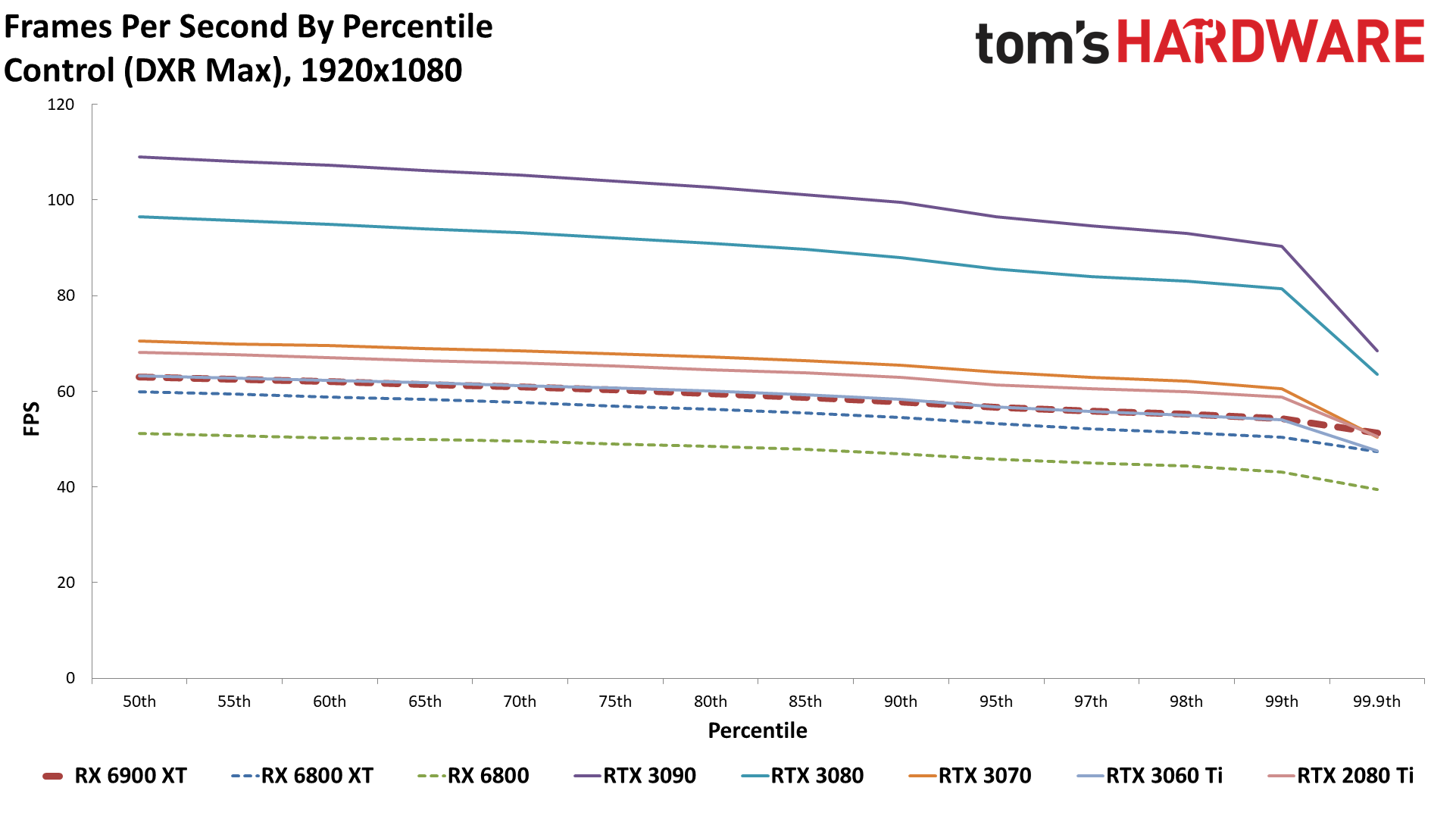
Control remains one of our favorite examples of what ray tracing can add to a game, thanks to the office environment with lots of vertical glass surfaces that are partially reflective. Ray tracing is also used for diffuse lighting and ambient occlusion, and the result is once again a significant win for Nvidia's GPUs. The 3080 is 53-59 percent faster than the 6900 XT, depending on the resolution. AMD's top GPU can basically match the RTX 3060 Ti.
Crysis Remastered
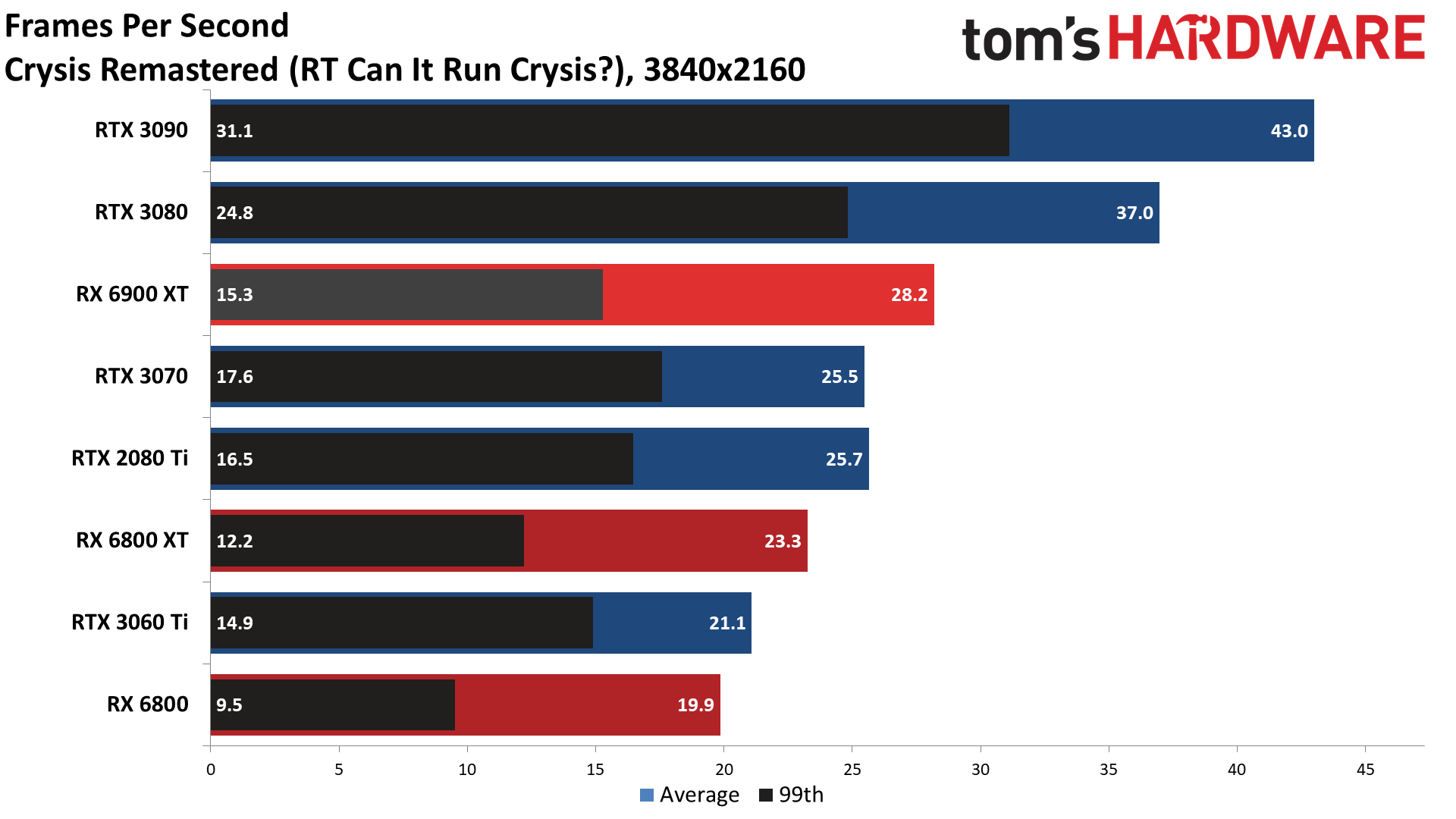





Crysis Remastered's hybrid DirectX 11/DXR solution is a bit unusual, both in what was done and how it ends up performing. The 6900 XT ends up with a victory of sorts at 1080p, thanks to better minimum fps results, but then it falls behind the 3080 at 1440p and 4K. There's no DLSS support to boost Nvidia’s lead further, but the overall rendering quality in Crysis Remastered isn't particularly impressive compared to some of the other games.
Dirt 5






We already discussed Dirt 5 with DXR above, so we'll skip the commentary here.
Fortnite
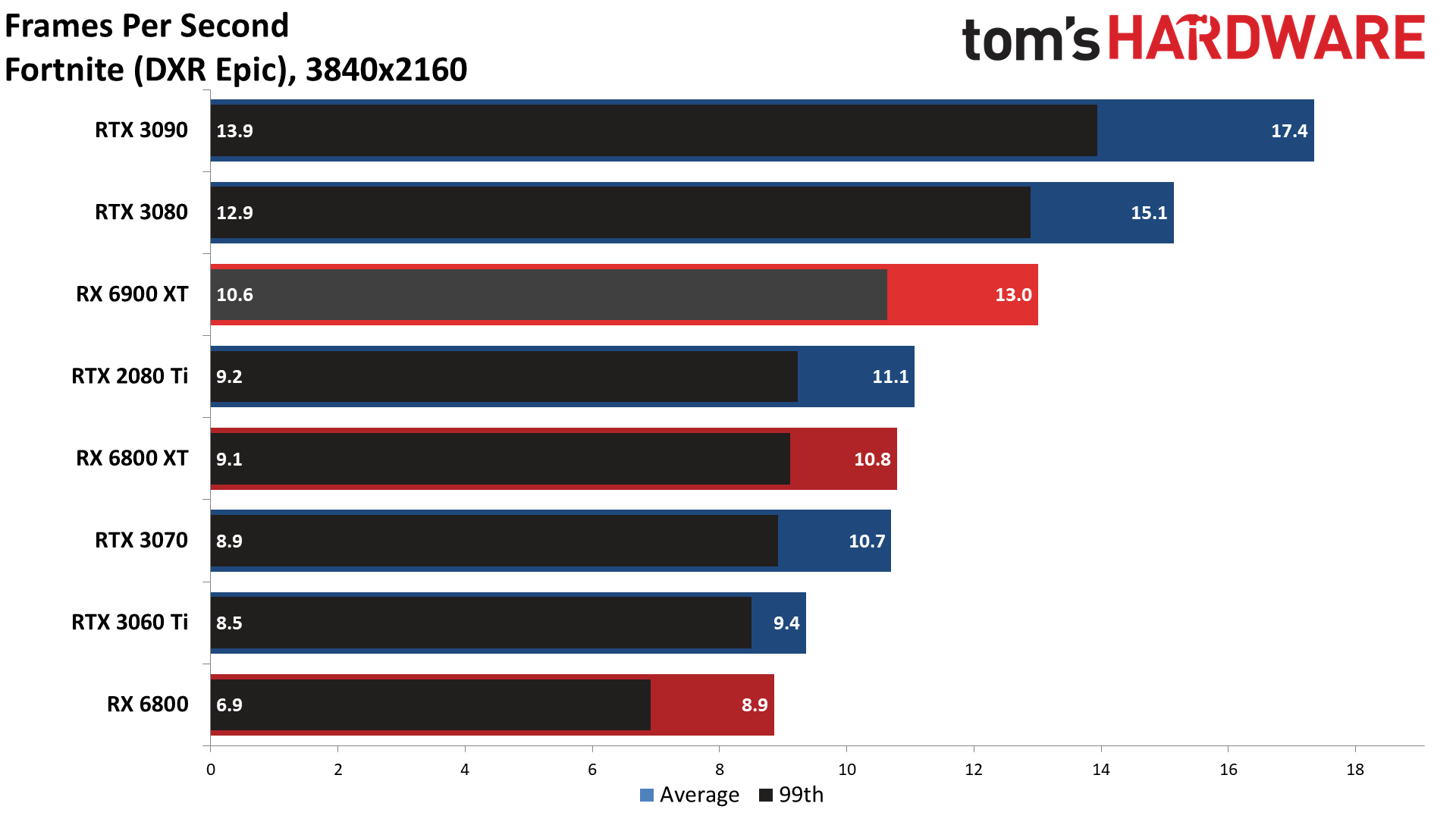




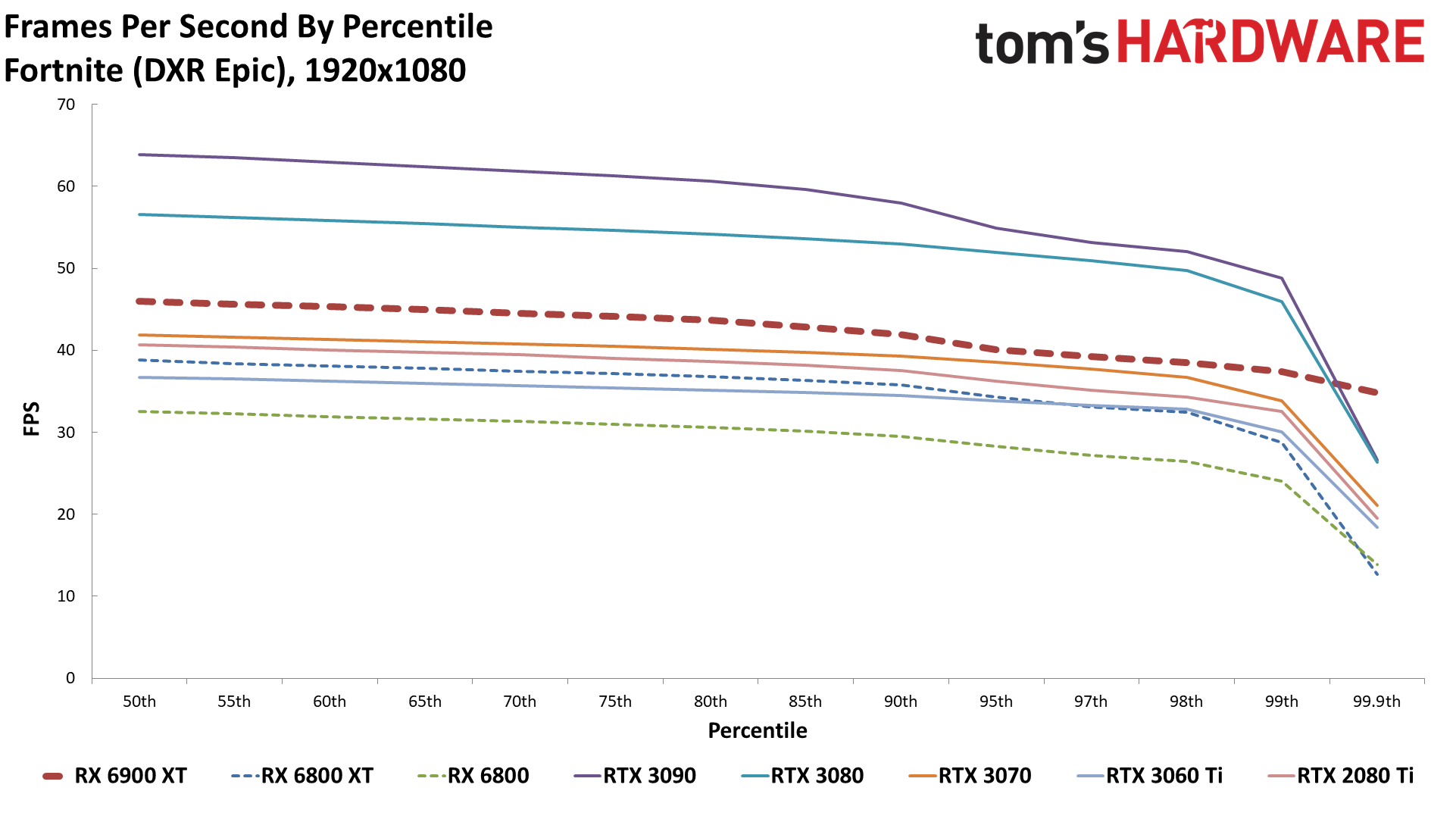
Turning on RT effects in Fortnite basically demands DLSS or some equivalent. The 3090 manages to break 60 fps at 1080p, but it's the only card to do so. AMD's 6900 XT is relatively close behind the 3080 this time, but it starts at 46 fps at 1080p and drops to sub-30 fps at 1440p before ending in the low-teens at 4K. Fortnite may look cartoony, but with RT enabled, it's one of the most demanding games around — based on its performance, at least.
Metro

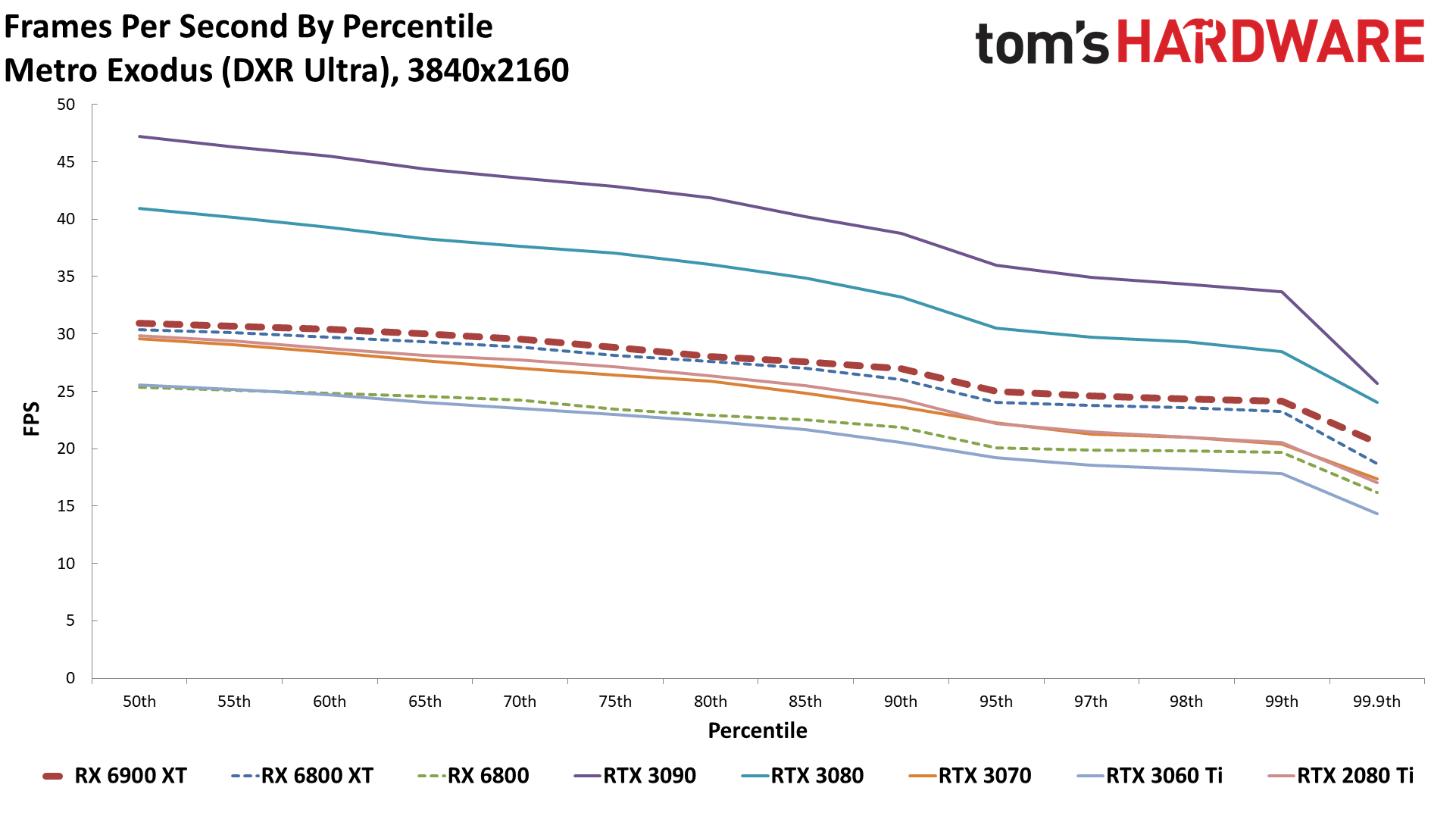
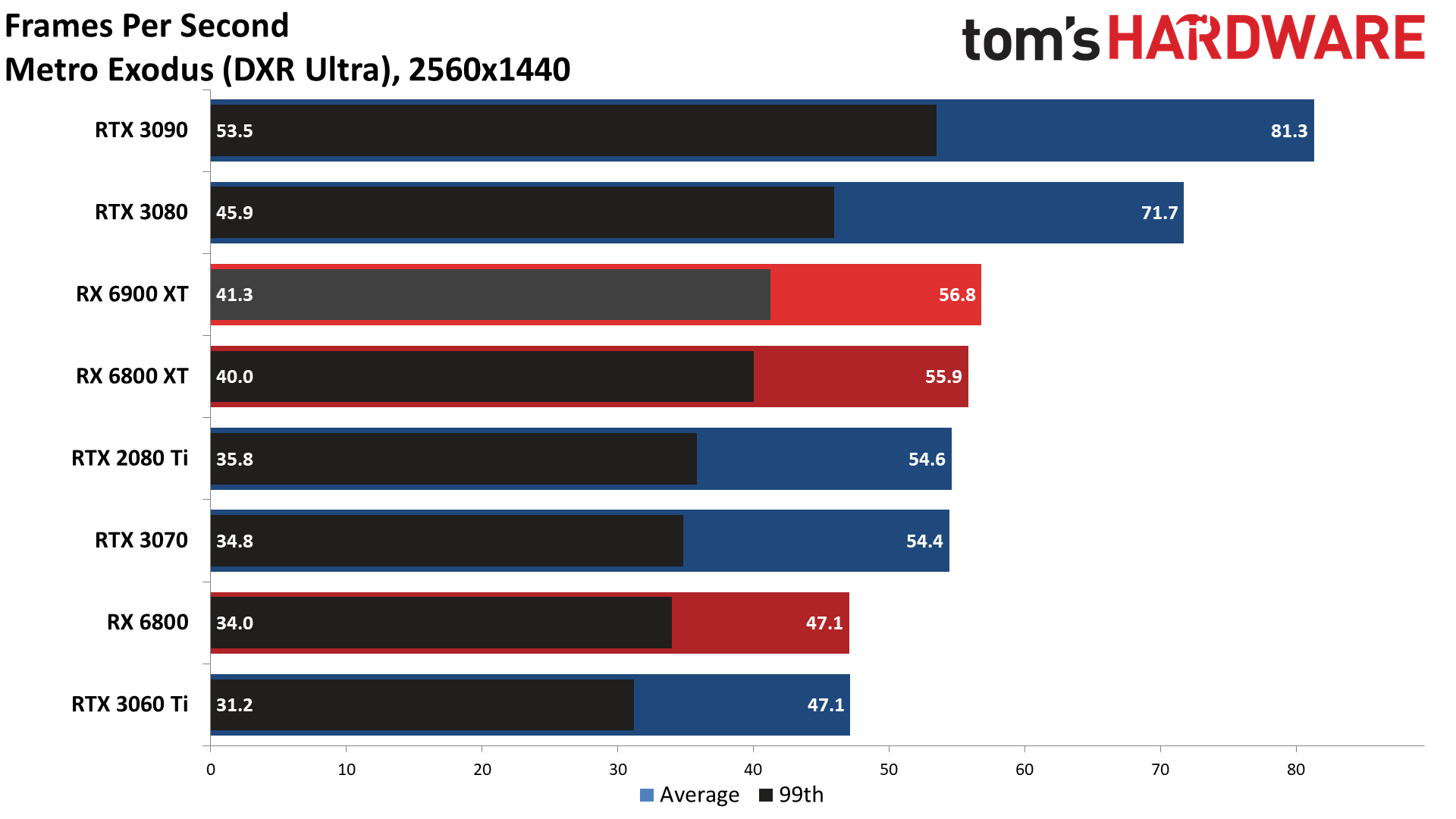



Metro Exodus was the first game to do global illumination via ray tracing, but the latest GPUs tend to run okay even with maxed-out settings. The 6900 XT hits 78 fps at 1080p and 57 fps at 1440p, then drops to 31 fps at 4K. The RTX 3080 is still 25-30 percent faster, but that's less than in some of the other games. Alternatively, AMD's 6900 XT and 6800 XT are just a bit faster than the RTX 3070 in this game.
Shadow of the Tomb Raider

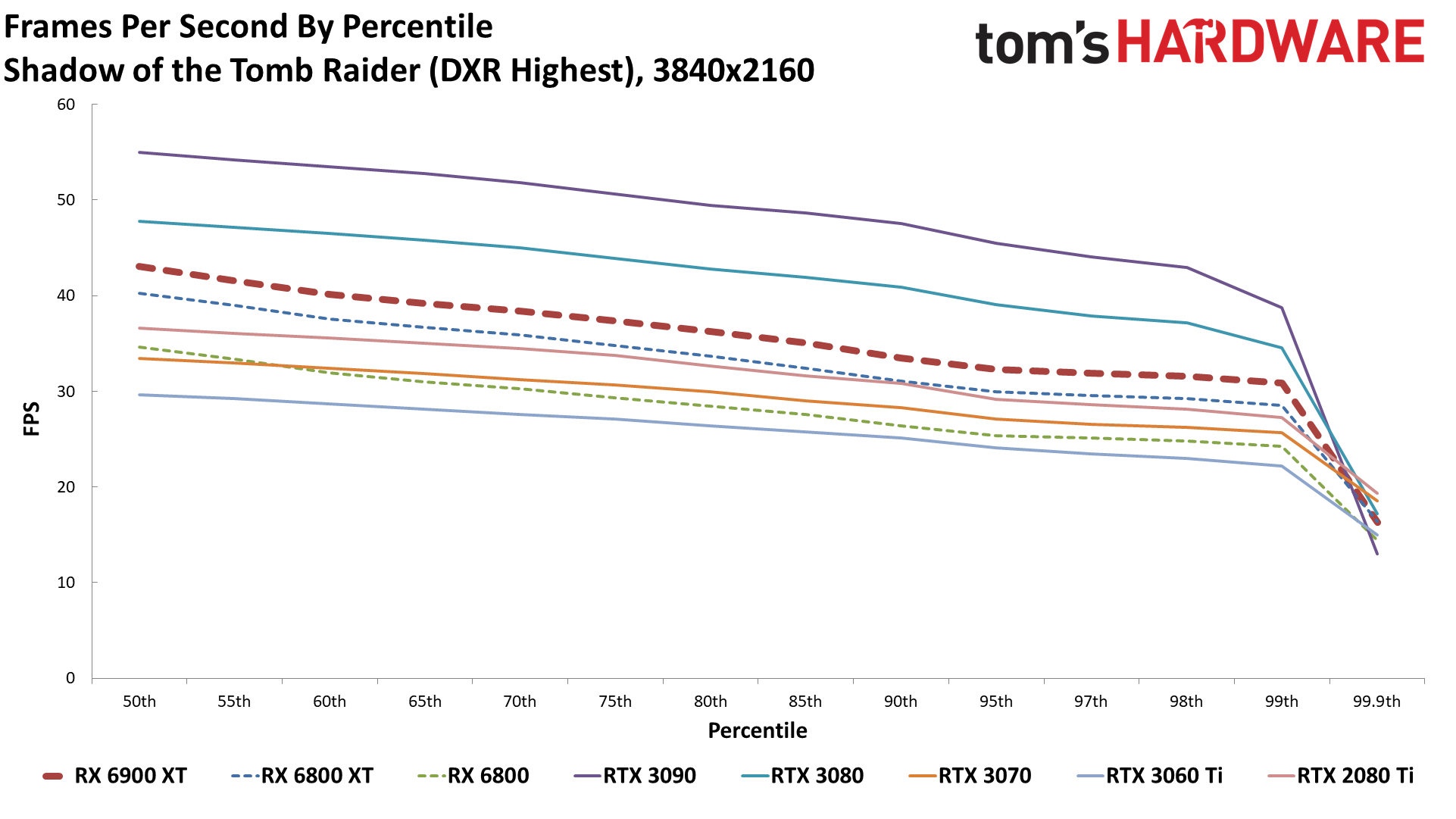




Shadow of the Tomb Raider is another one of the early RT-enabled games, using the tech for shadows only. It's actually not even that big of a visual change in many areas, but it's also not as big of a hit to framerates. Even at native resolution (without DLSS 1.0 on the Nvidia cards), most of the GPUs break 100 fps at 1080p, and the 6900 XT still puts up a solid 85 fps at 1440p. 4K trails off a bit at just 46 fps, but that's still playable, particularly if you have a FreeSync monitor.
Watch Dogs Legion






Again, we covered Watch Dogs Legion above, so we'll skip the commentary here, other than to note that the 6900 XT comes in just behind the previous-gen RTX 2080 Ti and basically ties the RTX 3070. That's not a great result for a card that has twice as much memory and costs twice as much as well.






Radeon RX 6900 XT: Blender and SPECviewperf 13

















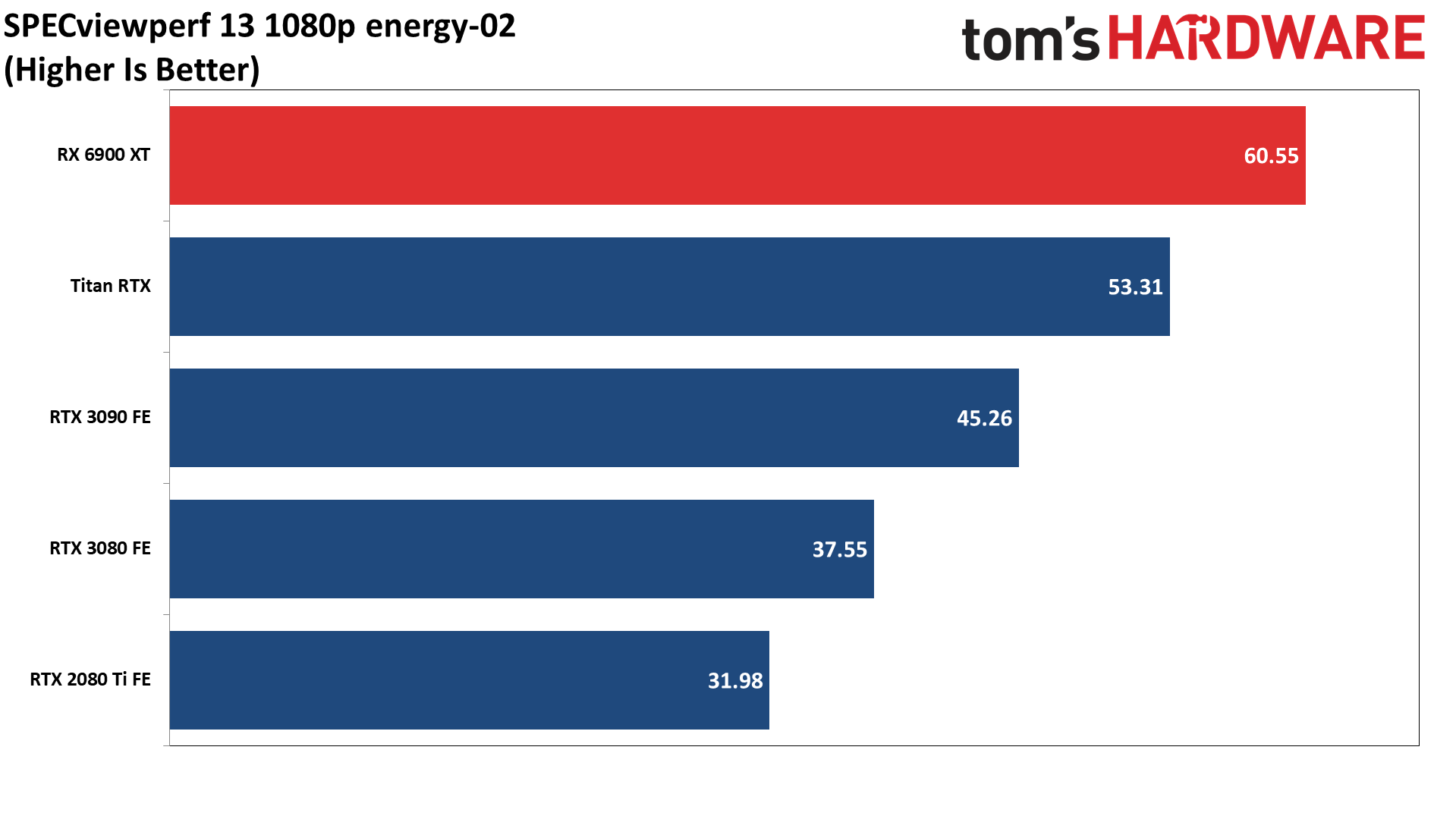



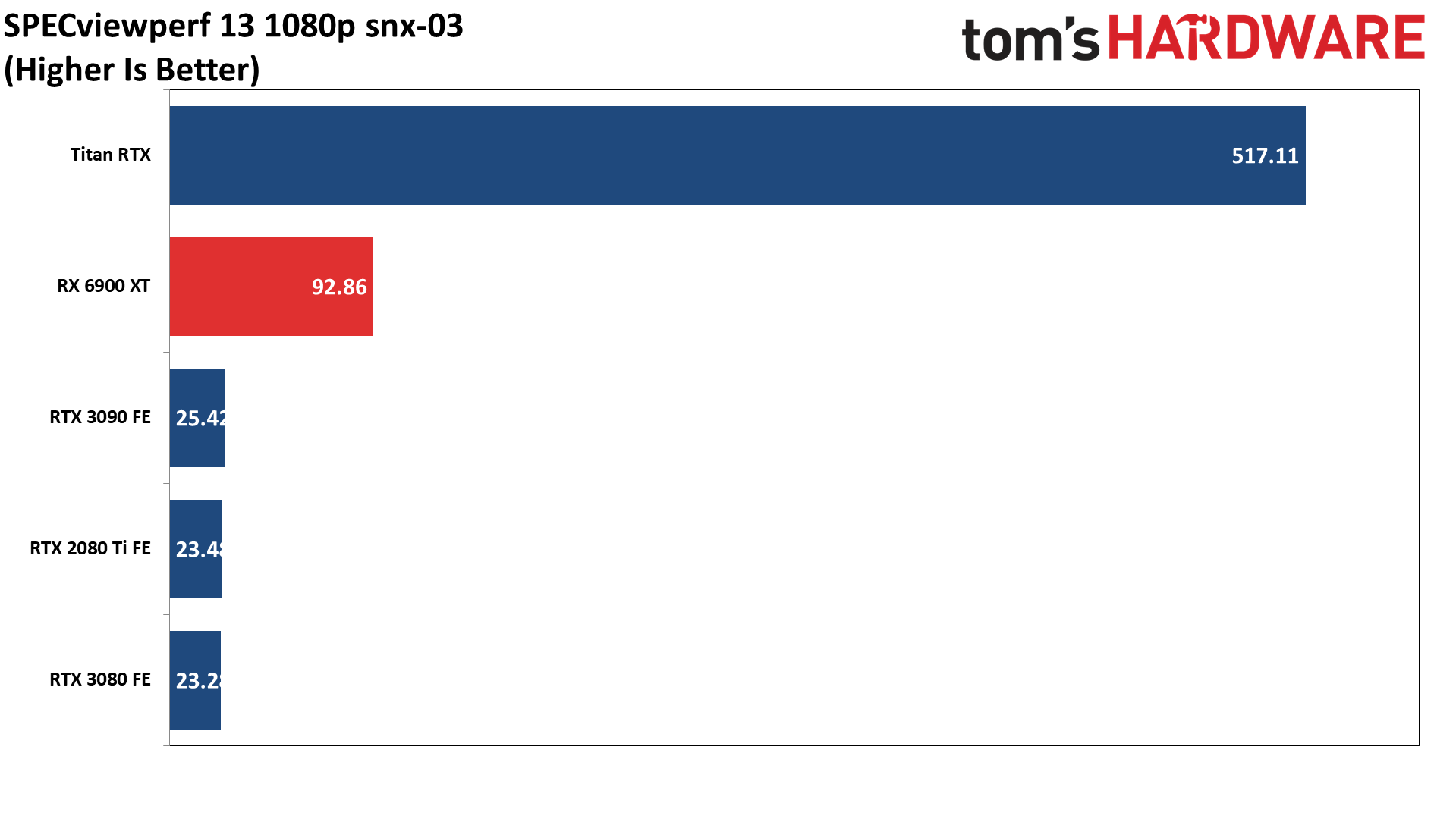

We weren't able to run the full suite of Proviz benchmarks like we did on the RTX 3090, but we did run the same Blender test along with SPECviewperf 13. The results are interesting, to say the least. Many of the Blender tests have the 6900 XT ranked last, but it does a bit better in the classroom and koro scenes. (It also repeatedly failed on the victor test scene in Blender Benchmark.)
SPECviewperf 13 also shows a mix of high performance and low performance, but AMD's RDNA2 card looks competitive overall. It matches the Titan RTX in catia-06 and places first in the energy-02 and medical-02 tests. It also has strong results compared to the RTX 30-series in snx-03 and sw-04. On the other hand, it doesn't do as well in maya-05, creo-02, or 3dsmax-06. If you use any of these professional applications, AMD's GPUs might be worth a look.
MORE: Best Graphics Cards
MORE: GPU Benchmarks
MORE: All Graphics Content
Current page: Radeon RX 6900 XT — Ray Tracing and DLSS Performance
Prev Page Radeon RX 6900 XT — Test Setup Next Page Radeon RX 6900 XT: Power, Temperatures, and Fan Speeds
Jarred Walton is a senior editor at Tom's Hardware focusing on everything GPU. He has been working as a tech journalist since 2004, writing for AnandTech, Maximum PC, and PC Gamer. From the first S3 Virge '3D decelerators' to today's GPUs, Jarred keeps up with all the latest graphics trends and is the one to ask about game performance.
-
Makaveli i'm confused is this an old review that was reposted?Reply
It mentions AMD's need a competitor to DLSS like FSR isn't already out, then there is mention of the 3080ti like it hasn't been confirmed yet. -
JarredWaltonGPU Reply
Yeah. For various reasons, our reviews were initially done as a single page in a different template (that doesn't show scores and other minor differences). One of the managing editors at Tom's Hardware is going back through some of my recent graphics card reviews and switching them to the review template. The text and content hasn't been changed, but I guess it posts with the new date.Makaveli said:i'm confused is this an old review that was reposted?
It mentions AMD's need a competitor to DLSS like FSR isn't already out, then there is mention of the 3080ti like it hasn't been confirmed yet. -
dunkyboy Reply
Wow. You are a tech website and you can't work out how to change the date of a post. This really doesn't do good things for your credibility.JarredWaltonGPU said:Yeah. For various reasons, our reviews were initially done as a single page in a different template (that doesn't show scores and other minor differences). One of the managing editors at Tom's Hardware is going back through some of my recent graphics card reviews and switching them to the review template. The text and content hasn't been changed, but I guess it posts with the new date.
You also then end up spamming my news feed with old irrelevant articles. -
NeoMorpheus Thanks for the review.Reply
I honestly wish that sites would stop being scared of nvidia marketing dept and place a disclaimer that all nvidia tech is really a lame way to lock the customer to their hardware, as proven by AMD FXR and the anti-consumer crap called dlss. -
Howardohyea Reply
one thing, coding and hardware isn't the same at all. Secondly, if you don't like their articles then go read another publisher's. Don't complain about it in the comments.dunkyboy said:Wow. You are a tech website and you can't work out how to change the date of a post. This really doesn't do good things for your credibility.
You also then end up spamming my news feed with old irrelevant articles.
Personally I like the formatting where it's divided into different pages, makes finding benchmarks easier.
Now here's my thoughts on the 6900XT: absolute joke, just like the 3080Ti and 3090.
If literally all you care about is gaming the 3080 and 6800XT are excellent cards (at normal pricing), and like the article pointed out, there's literally nothing different between the 6800XT and 6900XT except the cores. Memory and everything else is the same. Might save 50% price for 10% performance.
At least with 3090 you get 24GB of VRAM so content creators will love that. Plus it's faster than the 6900XT so people looking for the "absolute best" will go for the 3090 instead of AMD. -
JarredWaltonGPU Reply
I actually went through and reread the old review, then updated sections that were no longer correct and/or relevant. So, for example, FSR is now out, the RTX 3080 Ti is also here, prices are still fubar. But the review as it stands now should be generally correct in light of the current market situation.JarredWaltonGPU said:Yeah. For various reasons, our reviews were initially done as a single page in a different template (that doesn't show scores and other minor differences). One of the managing editors at Tom's Hardware is going back through some of my recent graphics card reviews and switching them to the review template. The text and content hasn't been changed, but I guess it posts with the new date. -
Kamikazekerr Personally Nividia is hitting it's marks there simple but effective I've had a 3090,80,70oc,3060ti and a 3060 junk and Personally I only play warzone prior to the dlss for cards like the 3070 even on custom cooling it struggled badly even turning it right up.with custom cooling, the 3080 vram took a big hit and aswell my personal favorite 3090 vram gauge looked like you threw 5 bucks in a Lincoln continental. LOL......Fast forward a few months I get an ASUS LC 6900XT it ran fine but warzone cranked up his hard on any card while the 6900 remained cool with all the buttons and dials and lack of software I found the card did not perform to my liking and sold it and jumped back into a rog 3070...but then I go and buy a refence amd 6900xt because of the look and ekwb water block. Getter plugged in and bam 100 degrees at the junction while I wait for my water block I've got 3 arctic fans force feedijg this thing air and still to high 80's and 90s which I do not like not to mention artifacting outta the box using only amd oc settings...so I pull it apart today no thermal anything under backplate..add my own from ekwb....then scrape the pad off the cooler side of the chip then watch the stock thermal pads almost Disintegrate under there own weight... replace them and repaste went fromReply
92 temp and 95 plus junction temp down to 75 to 82 ish temp and still a steady junction temp about 92 when working but still force feeding it air all around disappointment and the artifacting concerns me it's hit or miss now hopefully it comes around with the water. BUT all in all I would not recommend anything amd gpu related at this time...I hope to change that in the future but as of right now I'd take my Rog 3070 onwater over this 6900xt in performance for my needs and user friendly software and settings